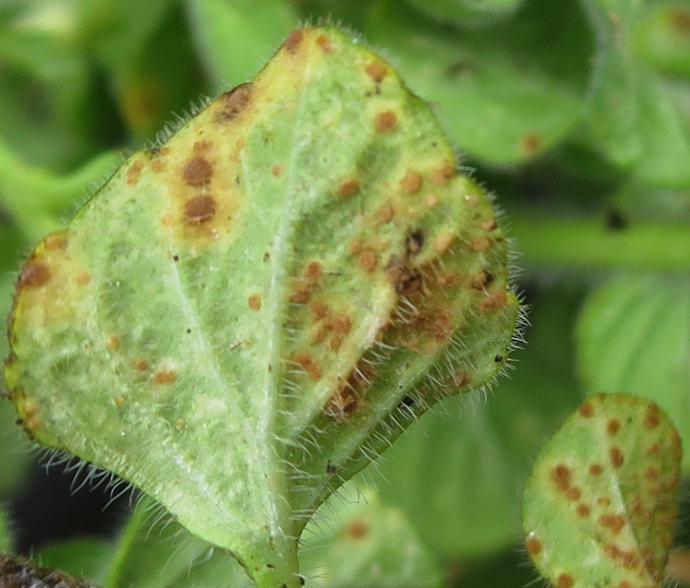Lesser calamint project steams ahead
Preliminary work on lesser calamint included important baseline research to assess the feasibility of initiating a biocontrol programme. “We conducted surveys of lesser calamint in New Zealand to identify arthropods or pathogens that are already damaging the weed, and to identify any predators or parasitoids that may interfere with the establishment and spread of new biocontrol agents,” said Paul Peterson, who is leading the project. The next crucial steps in the project were to identify the region of origin of the lesser calamint populations invading New Zealand, and to conduct surveys in the native range in search of promising candidate biocontrol agents. Swiss and Italian collaborators embarked on a series of surveys in southern Switzerland, southern France, Italy (including Sardinia and Sicily), Greece and southern Spain. All of the natural enemies that were found on above- and below-ground plant parts at the collection sites were collected for identification using morphological diagnostics and, in some cases, molecular techniques. At each collection site lesser calamint leaf samples were preserved for DNA analysis, which has indicated that the invasive populations in New Zealand originated in Italy, France and Switzerland.

Rust fungus on lesser calamint Credit: CABI
A total of 32 insect species, one mite and one fungal pathogen were found on lesser calamint plants, five of which are considered to be promising candidates for biocontrol. A leaf beetle (Chrysolina suffriani) that is endemic to Corsica and Sardinia was collected at six of the 12 sampling sites in Sardinia, with particularly high numbers found at one site. Although lesser calamint is the only reported host plant of the beetle in the literature, it was found feeding on another plant species in the mint family, Lamiaceae (presumed to be a European endemic known as Mentha suaveolens subsp. insularis). A flower gall midge (Asphondylia nepetae), which was identified as a promising candidate early on in the surveys, was found at the majority of the collection sites in Switzerland, France and Italy. Larval feeding on lesser calamint flowers induces gall formation, which reduces reproductive capacity. A leaf- and stem-mining moth (Trifurcula saturejae) was collected in France and Italy. Larvae of this moth species mine the leaves and the outer parts of the stems of lesser calamint, and it, too, has been recorded from a few closely related plant species. An eriophyid mite belonging to the genus Anthocoptes, not previously described, was found in central Italy. It is believed to be a leaf vagrant (a mite that feeds on the leaves of plants but does not form galls), as no galls were found. A rust fungus (Puccinia menthae) was found at three sites in southern France and at one site in central Italy. This species is reported from a wide range of plants within the Lamiaceae, including peppermint, but there are likely to be several strains of the pathogen, including one that is specific to lesser calamint.
All five of the candidate biocontrol agents were collected on lesser calamint plants that are closely related to New Zealand populations, suggesting they will be well adapted for feeding and development on plants here. Although early indications are that some of the candidate agents are not entirely host specific to lesser calamint, they may be sufficiently host specific for New Zealand, as we do not have many native, close relatives of lesser calamint. “Our next steps in the project will involve discussions around prioritisation of the candidate agents for further study, and which combination of the agents is likely to be the most effective,” explained Paul. “The host ranges and impacts of these agents will then be studied in our containment facility at Tamaki, in Auckland, once funding permits”.
This project is funded by the Sustainable Farming Fund, which is administered by the Ministry for Primary Industries. Additional sponsors include Manaaki Whenua – Landcare Research (MWLR), Waikato Regional Council, Horizons Regional Council (Manawatu–Wanganui region), Hawke's Bay Regional Council, and the Hawke's Bay Lesser Calamint Control Group. Surveys for biocontrol agents were conducted by the Centre for Agriculture and Bioscience International (CABI) in Switzerland, and the Biotechnology and Biological Control Agency in Italy. DNA analysis of plant material was conducted by MWLR.
